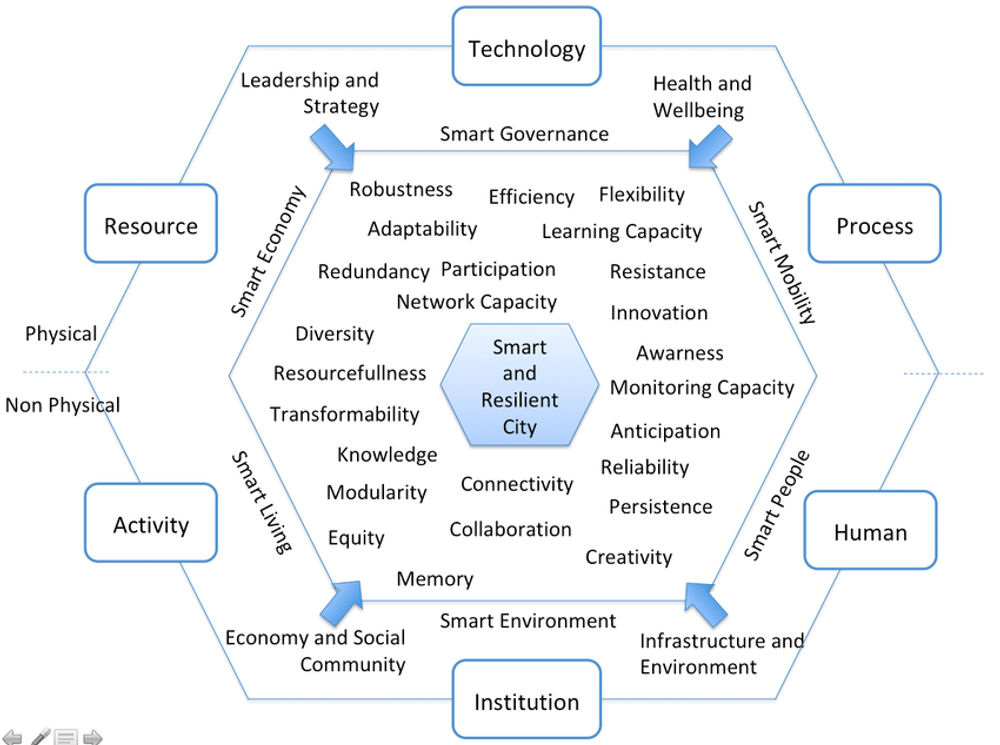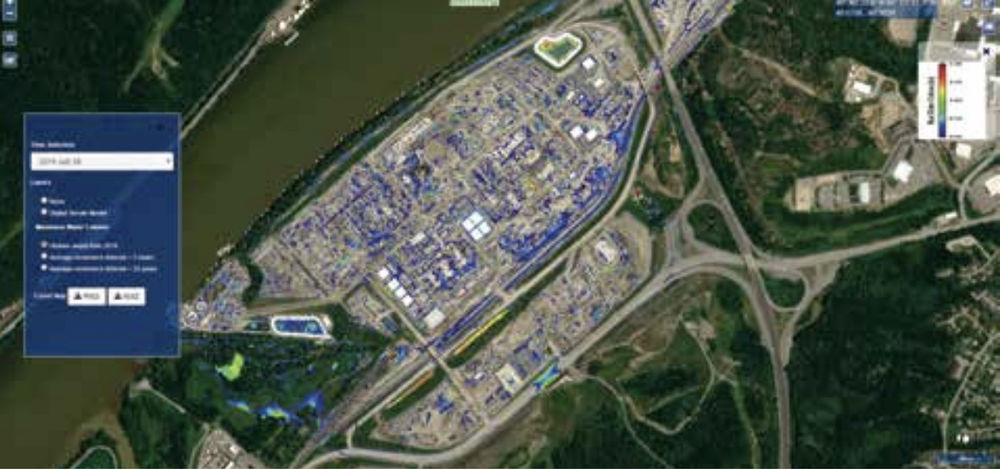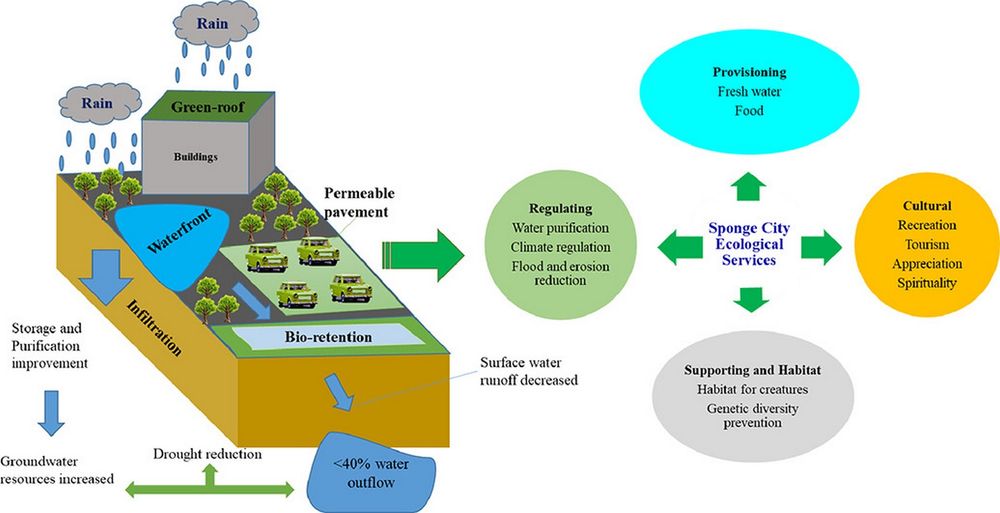- In its 20th Congress report, the Chinese government outlined its commitment to building liveable, resilient and Smart Cities
- Digital twin technology can help cities to build flood resilience in terms of risk assessment, preparedness, response, recovery and mitigation
- Sponge cities are now a core element of China’s eco-centric initiative that combines green technology with Smart City infrastructure
- While cities are growing rapidly, they also face a series of challenges, such as economic stagnation and weakness caused by the COVID-19 pandemic, increasing carbon emissions and environmental pollution, as well as urban vulnerability — exposure to natural disasters such as floods and storms. Such uncertainty and pressure all pose challenges to urban living and city governance.
The socio-economic impact on cities during the COVID-19 pandemic have led to increasing inequalities and record numbers of unemployment around the world. The challenges linked to the unfolding of the pandemic has led to the need for a radical re-think of the city. Having a well-designed, comprehensive urban resilience management solution is becoming increasingly crucial for cities to enable citizens to live well, safely and connected in a city in the face of extreme weather, environmental disasters, pandemics and other security threats.
As depicted in Sustainable Development Goal 11 of the United Nations (UN), the future of cities is to become more inclusive, safe, resilient and sustainable [1]. To respond to the UN initiatives, the Chinese government also outlined in its 20th Congress report its commitment to building liveable, resilient and Smart Cities [2].
Resilient cities are Smart Cities that focus on mitigating urban hazards, withstanding threats and rapidly recovering from such incidents through the application of Smart City strategy combined with digital twins. Multisource data integration — such as computer-aided design (CAD), building information modelling (BIM), geographic information system (GIS) and near-real-time data is streamlined into comprehensive workflows that are designed to mitigate risk and associated monetary losses so that cities can be resilient and sustainable.

Some pioneering cities are already embracing digital twin technology to drive sustainability. For example, Singapore is leveraging digital twins to optimise its clean energy production by identifying the best location for solar panels based on light and temperature variations. A public university in Singapore is also utilising digital twins to optimise its operations and reduce energy consumption by 31 percent and carbon emissions by 9.6 kilotons over the last two years [3].
Leveraging digital twin technology to achieve flood resilience
Exacerbated by climate change, flood risk is potentially the most serious urban hazard, particularly to urban populations in flood zones and coastal regions. There are projections that by 2030, around half the people in the world will live within 100 kilometres of a coastline [4]. In response to these threats, cities strive to improve flood resilience with data-driven planning, development and operations. Some cities are accomplishing this through digital twins to improve current infrastructure resilience and support ongoing development and future planning.
Specifically, digital twins can help cities plan for disasters and better respond to weather events that can cause flooding and widespread damage. Creating a digital twin to enable flood resilience entails the integration of city-scale reality modelling, 3D mapping and flood modelling. The resulting flood resilience model can be used for analysis, simulation, visualisation and communication. Such operational models are updated with the latest information from observed and forecasted weather conditions, reservoir water levels, data from hydrological stations and radar and satellite images. Bundling this information into a single system and using the flood resilience models allows cities to accurately estimate the conditions in the upcoming hours or days [5].

Digital twins of cities provide accurate and reliable data to city agencies involved in flood risk assessment, preparedness, response, recovery and mitigation. They contain information that enables users to perform analysis and make informed decisions for various activities, from long-term urban planning to time-critical emergency response.
Sponge cities in China — from conception to implementation
Following decades of urbanisation , overexploitation and pollution, China is now experiencing a serious water shortage and flooding made worse by the climate crisis. As a result, water-related issues have increased in frequency and intensity over the last few decades [6].
To respond to this acute challenge and to prevent loss caused to city assets, Chinese researchers conceived the concept of Sponge Cities, which was included and implemented as part of the urbanism policy in 2014 by the Chinese State Council [7]. A sponge city is a new urban construction model for flood management, strengthening ecological infrastructure and drainage systems. As existing urban areas often have to deal with flooding caused by heavy rain, high tides or swollen rivers, sponge city design can mitigate or prevent such events by providing the area with the ability to absorb the water naturally.
Since 2016, the Chinese Government has invested heavily in sponge cities, which is now a core element of urban design schemes across the country. Wuhan, the central city that is famous for its water abundance, has suffered from waterlogging for years. On top of waterlogging, water pollution deteriorates the water management system. As one of the earliest cities to adopt the sponge city initiative in 2015, Wuhan Sponge City Programme targeted that 20% and 80% of the urban area should achieve the sponge city requirements by 2020 and 2030, respectively [8].
A cost analysis showed that the use of sponge measures with a focus on nature-based solutions in the city’s demonstration areas has saved around CNY 4 billion compared to the conventional approach to upgrade the drainage system, which reveals the great potential of nature-based solutions [9].

Construction of sponge cities was further accelerated in 2022 with the “New Infrastructure” and Smart City initiatives. Sponge cities can now leverage green technologies through interconnected greenways and waterways, contiguous open green spaces, green roofs, porous design interventions and drainage systems, water savings and recycling initiatives. In addition, all these elements can be combined with the road system and buildings that can be monitored and optimised through Smart Water management solutions in a Smart City infrastructure.
China now has more than 250 cities that have transformed into sponge cities successfully. Sponge city developments promise an accountable form of urban planning that steps away from green-washed eco-city plans to a more eco-centric version of China’s ecological civilisation, following a wider global trend in environmental and green-oriented developments [10].
A holistic city governance approach is necessary for the wider adoption of resilient infrastructure and technologies
The challenge today is no longer to create sustainable cities but truly regenerative ones — to ensure that they not only become resource-efficient and low-carbon-emitting but positively enhance the ecosystem services they receive beyond their boundaries.
Advocates of “urban resilience” urge for the adoption of a holistic city governance approach, which aims to keep residents, property, infrastructure and nature safe and emerge stronger from a crisis through the emergence of a smart and resilient city [11]. As technology plays a major role in building more resilient cities, redesigning some organisations, promoting sustainable processes and developing innovation and collaboration between all stakeholders are considered necessary.
References
- [1] United Nations: GOAL 11: Sustainable Cities and Communities
- [2] The State Council of The People’s Republic of China: Create Livable, Resilient Smart Cities
- [3] Bloomberg: How Cities Are Using Digital Twins Like a SimCity for Policymakers
- [4] Gim International: City-scale Digital Twins for Flood Resilience
- [5] Bentley: The Importance of Digital Twins for Resilient Infrastructure
- [6] Earth.org: Sponge City Concepts Could Be The Answer to China’s Impending Water Crisis
- [7] The State Council Information Office of the People’s Republic of China: The State Council Proposed Five Requirements to Promote the Construction of Sponge Cities
- [8] & [9] GrowGreen: Wuhan Sponge City Programme: Achieving Harmony Among People, Water and City
- [10] Rethinking the Future: Sponge Cities
- [11] Urban and Resilience Innovation Research Understanding Resiliency: What It Means to be a Resilient City and Tools to Support







